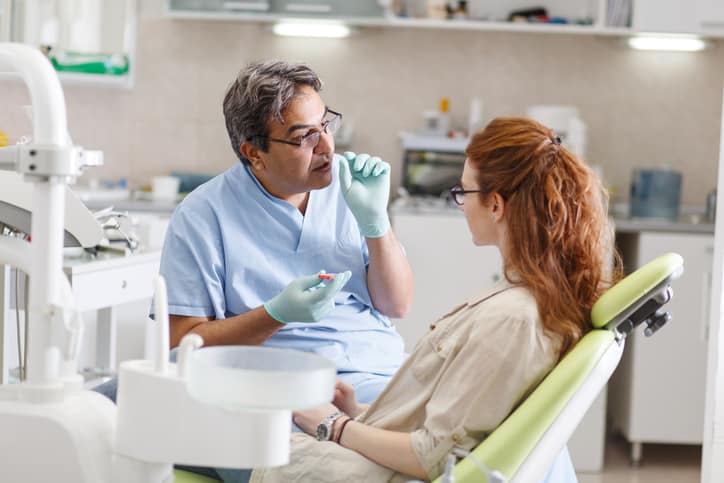Best dental appliances for obstructive sleep apnea
Table of Contents
Table of Contents
Sleep apnea and nasal obstruction can be debilitating conditions that greatly reduce one’s quality of life. One common treatment for these conditions are dental appliances specifically designed to assist with breathing during sleep. In this article, we will explore the benefits of these appliances and how they can improve your overall health and well-being.
The Pain Points of Dental Appliances for Sleep Apnea and Nasal Obstruction
Individuals who suffer from sleep apnea or nasal obstruction experience interrupted sleep, which can cause fatigue, irritability, and difficulty concentrating during the day. Loud snoring is also a common complaint, which can impact the sleep quality of partners or family members. Breathing through the mouth can also lead to dry mouth and sore throats.
The Target of Dental Appliances for Sleep Apnea and Nasal Obstruction
Dental appliances are an effective treatment option for those with mild to moderate sleep apnea and nasal obstruction. These appliances can also be used in conjunction with other treatments, such as continuous positive airway pressure (CPAP) machines.
The Benefits of Dental Appliances for Sleep Apnea and Nasal Obstruction
Dental appliances work by repositioning the jaw and tongue to help keep the airway open during sleep, thus reducing the instances of apnea and snoring. These appliances are easy to wear, portable, and often more comfortable than other treatment options. With consistent use, individuals can experience higher quality sleep, decreased fatigue, and improved overall health.
Personal Experience with Dental Appliances for Sleep Apnea and Nasal Obstruction
As someone who has suffered from sleep apnea and nasal obstruction for years, I have found relief through the use of dental appliances. The appliance I use is customized to fit my mouth and is comfortable to wear while sleeping. Since using the appliance, I have noticed a significant reduction in snoring and an improvement in the quality of my sleep. I wake up feeling more rested and alert, and my overall health has improved as a result.
How Dental Appliances for Sleep Apnea and Nasal Obstruction Work
Dental appliances work by gently shifting the position of the lower jaw and tongue forward, which helps to keep the airway open. The appliance is customized to fit the individual’s mouth and is designed to be comfortable to wear while sleeping. These appliances are easy to use and require little to no maintenance, making them a convenient option for those struggling with sleep apnea and nasal obstruction.
The Types of Dental Appliances Available
There are two main types of dental appliances available for those with sleep apnea and nasal obstruction. The first type is a mandibular advancement device (MAD), which repositions the lower jaw forward to keep the airway open. The second type is a tongue-retaining device (TRD), which holds the tongue in place to prevent it from blocking the airway during sleep. Both options are effective and can be customized to meet the individual’s needs.
The Importance of Consistent Use
To experience the full benefits of dental appliances, consistent use is essential. It may take some time to adjust to wearing the appliance while sleeping, but with persistence, individuals can achieve a higher quality of sleep and improved overall health.
Question and Answer
Q: Are dental appliances covered by insurance?
A: Many insurance companies do cover the cost of dental appliances for sleep apnea and nasal obstruction. It is important to check with your insurance provider to determine coverage.
Q: How long will it take to adjust to wearing a dental appliance?
A: It can take a few weeks to adjust to wearing a dental appliance while sleeping. With consistent use, individuals should become accustomed to wearing the appliance and experience the full benefits.
Q: Can dental appliances be worn by anyone with sleep apnea?
A: Dental appliances are most effective for individuals with mild to moderate sleep apnea. Those with severe sleep apnea may require additional treatment options or a combination of treatments.
Q: How often should dental appliances be replaced?
A: Dental appliances should be replaced every one to two years to ensure maximum effectiveness and comfort.
Conclusion of Dental Appliances for Sleep Apnea and Nasal Obstruction
Dental appliances provide an effective and convenient treatment option for individuals with sleep apnea and nasal obstruction. With consistent use, individuals can experience higher quality sleep, improved overall health, and a better quality of life. If you are struggling with sleep apnea or nasal obstruction, consider talking to your dentist or healthcare provider about dental appliances as a treatment option.
Gallery
Dental Appliances For Sleep Apnea Georgetown TX - Oral Appliance Therapy

Photo Credit by: bing.com / sleep appliances dental georgetown apnea tx oral obstructive therapy appliance
Dental Appliances For Sleep Apnea | Your Beautiful Smile

Photo Credit by: bing.com / apnea
Types Of Sleep Apnea Dental Appliances In Michigan | Clinton Dental Center

Photo Credit by: bing.com / apnea sleep dental types appliances michigan
Sleep Apnea Treatment - Germantown, TN - Jackson, TN - Trenton, TN

Photo Credit by: bing.com / sleep apnea oral appliances appliance mandibular reposition tongue treatment airway jaw open jackson throat worn muscles lower night
Best Dental Appliances For Obstructive Sleep Apnea - Home & Home

Photo Credit by: bing.com / apnea obstructive



